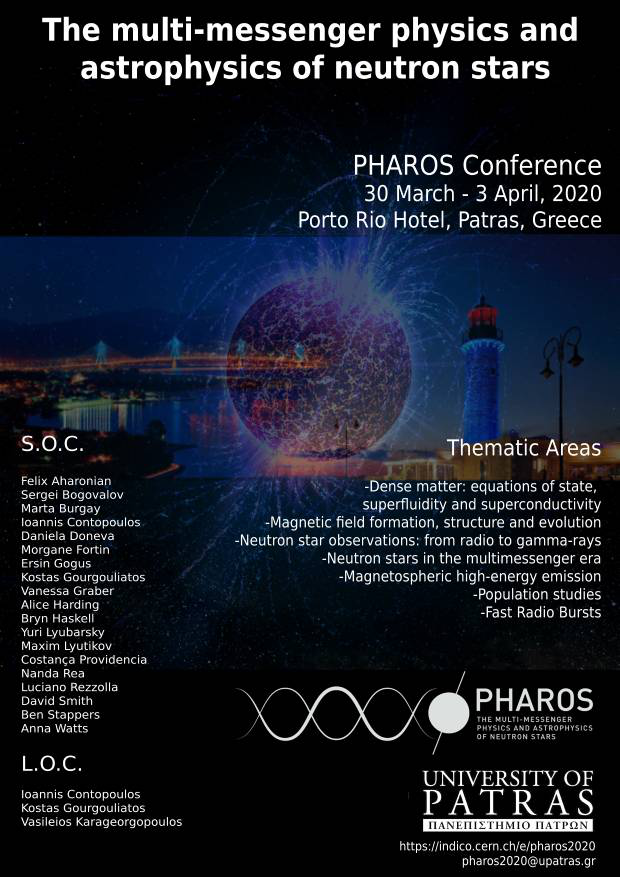Speaker
Description
When subject to the rotationally induced electric field of pulsar polar caps, electrons and positrons are accelerated along the magnetic field, producing gamma-ray curvature radiation. The emitted gamma-rays, in turn, are absorbed by the magnetic field, converting to new electron-positron pairs. The repetition of this process leads to a cascade of elementary particles that are the source of pulsar magnetospheric plasma. The final number of particles created in pair cascades and their connection with pulsar radio emission remains an open problem. Obtaining numerical models of pulsar pair discharges is a challenging endeavor and one that was only addressed in simplified one-dimensional simulations. In this work, we present two-dimensional particle-in-cell simulations of pair discharges near pulsar polar caps, including the Quantum Electrodynamics effects responsible for gamma-ray and pair production processes from first principles. These simulations allow studying the time dependence and distribution in altitudes and latitudes of pair cascades while resolving the relevant plasma electrodynamic scales. We analyze the particle spectra and discuss the constraints that our simulations put on pair production rates for use in global pulsar simulations, underlining the differences to previous models with simplified prescriptions. We also estimate the fraction of gamma-rays that escapes the polar cap and contributes to the flux of polar gamma-rays in Fermi data.

